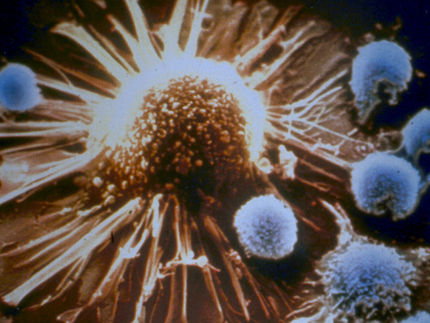Fusion Protein rFlaA:Betv1 Induces Regulatory B Cells and Thus Suppresses Allergic Processes
The fusion protein is a promising candidate for the treatment of birch pollen allergies
In the search for effective and safe therapeutics for hyposensitisation, colleagues at the Paul-Ehrlich-Institut and the Justus Liebig University in Giessen investigated the effect of the birch pollen allergen-containing fusion protein rFlaA:Betv1 on B cells (specific immune cells). rFlaA:Betv1 leads to the differentiation of B cells into regulatory cells. These regulatory cells produce antibodies and messenger substances (interleukins) that counteract allergic reactions. This is one of the findings that make fusion proteins promising candidates for allergen-specific immunotherapy (AIT). Allergy reports on the results in its online edition from 04.October 2022

Symbolic image
pixabay.com
Background
About a quarter of the population is affected by allergies. These allergies are most often triggered by immunoglobulin IgE-mediated hypersensitivity of the immune system.
Usually only the allergy symptoms are treated. However, allergen-specific immunotherapy (AIT) offers the possibility of significantly reducing or even curing allergies. When this therapy is applied, the immune system is desensitised via application of increasing doses of the antigen over a number of years. Successful treatment will lead to the development of an allergen tolerance, so that allergy symptoms no longer occur. This has not yet been possible for every allergy.
Combination Better Than Individual Components: Fusion of Allergen and Adjuvant for Immunotherapy?
Previous AITs use a mixture of non-standardized allergens and adjuvants. Although successful allergen-specific immunotherapies for some allergens have already been developed, there are many allergens for which there is no AIT available.
Allergen adjuvant fusion proteins – i.e. composite proteins – are considered promising candidates for AIT. The fusion protein rFlaA:Betv1, developed at the Paul-Ehrlich-Institut, is composed of the birch pollen allergen Bet v 1 and the flagellar protein rFlaA from a bacterium (Listeria monocytogenes), which serves as an adjuvant. In previous studies, the development of a birch pollen allergy could be prevented with the fusion protein in the animal model. However, the mechanism of action has not yet been fully elucidated. The working group had already shown in their previous work that the fusion protein rFlaA: Betv1, in contrast to a mixture of the two individual proteins, leads to an increased release of the messenger substance interleukin 10 (IL-10). IL-10 inhibits the allergen-specific, excessive reaction of type 2 T helper cells (TH2). In addition, the production of allergen-specific regulatory T cells and immunoglobulin G (IgG) antibodies seems to play an important role in the regulation of allergies.
New Study Investigates Further Mechanisms of Action
The aim of the present study was to gain further insights into the immunomodulating influence of rFlaA: Betv1 on immune cells of the body. This time, the focus was on the B cells of the immune system. For this purpose, undifferentiated B cells from mice and humans in cell cultures (in vitro) were investigated. The fusion protein triggered mTOR-dependent and MyD88-dependent differentiation of the B cells. This means that mTOR, a central regulating protein in cell metabolism, and the MyD88 protein, which serves to transmit signals within the immune cells, are integrated into the mechanism of action.
The differentiated B cells subsequently developed regulatory capabilities: they mediated the release of IL-10 and IL-6, antigen-binding antibody production and immune-inhibiting properties.
The research results suggest that the allergy-suppressing effect of flagellin fusion proteins is partly due to their ability to trigger the differentiation of functional regulatory B cells. These and previous findings make flagellin:allergen fusion proteins highly interesting therapeutic candidates for future AIT applications.
























































